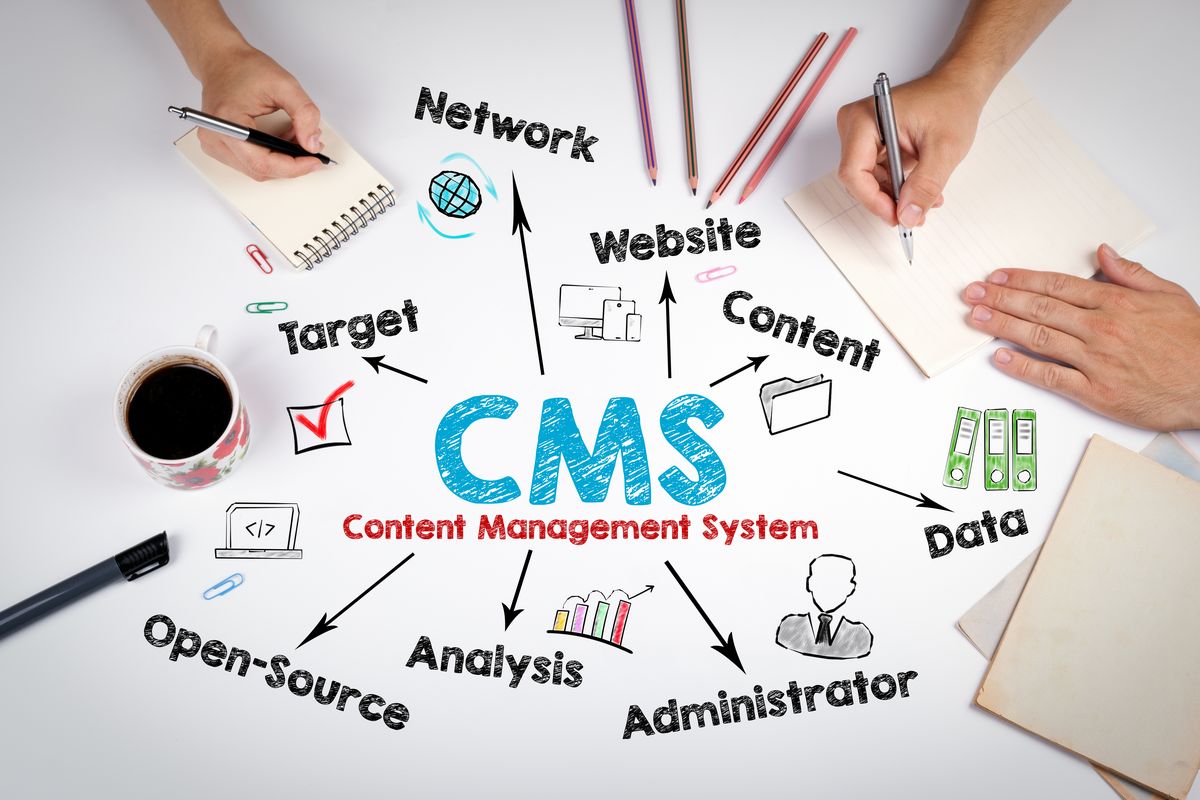Understanding the Essentials of CI/CD Pipelines in 2024
In the context of rapidly changing technological innovations, understanding the essence of Continuous Integration/Continuous Deployment (CI/CD) pipelines is crucial. The CI/CD pipeline forms the backbone of modern web development. It represents an orchestrated sequence of development activities that automate the build, testing, and deployment procedures. In 2024, web development is no longer about coding alone; it encompasses coordination of various tools and practices to improve production efficiency and application reliability. Utilising a CI/CD pipeline breaks down software development into smaller and manageable parts, ensuring continuous feedback for code changes. The automated process helps in quickly detecting and rectifying errors, proving to be a reliable infrastructure setup for teams that consist of developers, testers, and operations.
Steps to Implement CI/CD Pipelines for Efficient Web Development in 2024
Implementing CI/CD pipelines in 2024 is a well-defined process that involves several steps. Firstly, setting up a version control system like Git is central to track and manage code changes. Next, the process of Continuous Integration comes into play, where each integration is verified by an automated build and test. This step uses tools like Jenkins or CircleCI for automation. After the coding and integration phase, it is essential to implement the Continuous Delivery aspect. This involves the use of configuration management and containerization tools such as Docker and Kubernetes. These tools ease the process of app deployment across varied environments. Lastly, Continuous Deployment seamlessly deploys all changes to the live production environment after passing through stages like unit testing, integration testing, and system testing. It must be noted that diligent monitoring and logging form the base of an efficient CI/CD pipeline, ensuring quality performance and alerting the team about any issues.
Ensuring CI/CD Pipeline Efficiency in the Face of Emerging Trends
As we move further into 2024, several emerging trends are reshaping the landscape of web development. Therefore, maintaining the efficiency of CI/CD pipelines in this dynamic atmosphere can pose a challenge for development teams. Incorporating tools and technologies such as AI and Machine Learning in the CI/CD process can effectively assist in prediction, early detection of issues, and efficient automation. The application of DevOps with the CI/CD pipeline is another significant trend. It bridges the gap between the development and operations teams, speeding up deployment, and increasing the overall efficiency. Emphasising security through DevSecOps, implementing Infrastructure as Code (IaC), and utilizing Observability Tools to monitor the CI/CD pipeline's performance are other methodologies for tackling 2024’s development challenges. Apart from this, continuous learning and staying up-to-date with the latest technologies will remain a cornerstone for maintaining efficiency in web development.

Benefits of Implementing CI/CD Pipelines in Web Development
Web development in 2024 is increasingly complex, and the CI/CD pipeline offers several advantages to help manage this complexity. First and foremost, CI/CD pipelines facilitate a more rapid feedback cycle. By detecting issues early in the development process, teams can fix problems before they escalate, reducing business risk and improving quality. The automation in CI/CD workflows eliminates repetitive tasks, freeing developers to focus on more critical areas, such as crafting new features or optimizing application performance. In essence, CI/CD pipelines enhance productivity and accelerate time-to-market. An additional benefit is that the continuous deployment phase facilitates seamless software releases. It ensures that the codebase is always in a deployable state, reducing the traditional overhead of 'software release days'. Moreover, the ability to make small, incremental software updates allows for quicker user feedback and faster iterations. Lastly, CI/CD pipelines foster a culture of improved collaboration and shared ownership, contributing to more cohesive, efficient teams.
The Future of CI/CD Pipelines in Web Development
The role of CI/CD pipelines in web development will continue to evolve with emerging technologies and development practices in the year 2024 and beyond. One possible future direction is the further integration of AI and Machine Learning into the CI/CD processes, offering more sophisticated prediction capabilities, anomaly detection, and automated testing. Another emergent trend is 'GitOps' – managing and versioning infrastructure deployments using Git as the single source of truth. GitOps can lead to more efficient code management and streamlined CI/CD workflows. Microservices, containerization, and serverless architectures are other trends that will shape the future of CI/CD pipelines. Each of these paradigms requires precise and streamlined deployment strategies, which are well catered for by CI/CD pipelines. In the future, we might also see increased usage of 'AI Ops', i.e., incorporating AI in operational aspects for more dynamic and intelligent CI/CD workflows.
Common Challenges in Implementing CI/CD Pipelines and Strategies to Overcome Them
While implementing CI/CD pipelines in 2024 brings about numerous benefits, several challenges can hinder the process. One common problem is the lack of knowledge and expertise in CI/CD principles and tools. To combat this, teams can invest in continuous training and learning. Another challenge is the cultural shift to a more collaborative approach. Organizations need to foster a culture of shared responsibility and continuous improvement for successful CI/CD adoption. The incorporation of new technologies and tools may also face resistance from team members accustomed to traditional development methods. It's essential to communicate the benefits and efficiencies gained through these changes and encourage a mindset of adaptability. Finally, security concerns can also pose a challenge in CI/CD implementation. Embracing a "security as code" approach and integrating security practices into every stage of the CI/CD pipeline can help overcome this challenge.

Role of Cloud in Optimizing CI/CD Pipelines
The significant role of cloud computing in optimizing CI/CD pipelines shouldn't be underestimated in 2024. As organizations continue to embrace multicloud and hybrid cloud strategies, the need for CI/CD pipelines that can seamlessly manage application deployment across different cloud environments has become crucial. Cloud-based CI/CD solutions provide easy scalability, high availability, and security, which are vital for efficient web development. With cloud-native CI/CD platforms, teams can build, test, and deploy their applications across various cloud environments without worrying about infrastructure management. Moreover, cloud providers offer numerous tools and services like container orchestration, serverless computing, and managed services, which can be integrated into the CI/CD pipeline for more efficient and automated workflows. Furthermore, with strong security practices and data encryption options provided by cloud service providers, companies can ensure that their CI/CD pipelines and the developed applications are secure.
Continuous Testing in CI/CD Pipelines
In 2024, continuous testing is a vital aspect of CI/CD pipelines. It aims at conducting automated tests at every stage of the software development lifecycle, promoting early detection and resolution of bugs and vulnerabilities. By incorporating continuous testing into CI/CD pipelines, teams can ensure that each code change is reliable and does not negatively affect the application's functionality. Technologies like test-driven development, behaviour-driven development, and tools for automated testing play pivotal roles in implementing continuous testing. Key benefits of continuous testing in CI/CD include improved software quality, faster feedback, less rework, and a significant reduction in business risks associated with software defects. Additionally, continuous testing also contributes to a better understanding of the product and customer requirements, fostering more accurate and effective development.
Essential Thought Leadership in CI/CD Implementation
As CI/CD practices continue to reshape the landscape of web development in 2024, it's vital that organisations empower their teams with essential thought leadership in this space. One aspect of this is investing in knowledge resources and providing dedicated time for team members to engage with these. Conferences, workshops, mentoring programs, and online courses can prove to be invaluable in strengthening team members’ understanding of CI/CD principles and best practices. Furthermore, engaging with thought leaders and experts not only provides guidance but also illustrates the practical applications and benefits of implementing CI/CD pipelines. Organizations need to encourage their teams to experiment with cutting-edge technologies and advanced CI/CD tools. Emphasising an environment of learning and adaptation can prove to be significantly beneficial in surmounting the challenges of CI/CD implementation and maximising its benefits.
| CI/CD Component | Tool/Technology | Role in CI/CD Pipeline | Emerging Trends | Challenges |
|---|---|---|---|---|
| Version Control | Git | Track and manage code changes | GitOps | Lack of knowledge and expertise |
| Continuous Integration | Jenkins, CircleCI | Automate build and test of code | Integration of AI and Machine Learning | Cultural shift to collaborative approach |
| Continuous Delivery | Docker, Kubernetes | Deploy application across environments | Microservices, containerization | Resistance to new technologies |
| Continuous Deployment | N/A | Seamless deployment to production environment | AI Ops | Security concerns |
| Continuous Testing | Test-driven and behaviour-driven development tools | Conduct automated tests at every development stage | N/A | N/A |
Increasing Reliability and Scalability with CI/CD Pipelines
In 2024, increased customer demand and high user expectations require web applications to be highly stable and scalable. Implementing CI/CD pipelines in web development plays a significant role in achieving these outcomes. With the help of these pipelines, updates and bug fixes are delivered in a controlled and predictable manner, ensuring the continuity and reliability of the product. By detecting integration issues early, the CI/CD pipeline helps in maintaining software reliability. Similarly, with the automation of deployment processes, businesses can rapidly scale up or down to match changing user requirements. Whether it is about meeting a sudden surge in user demand or adding new features, the CI/CD pipeline provides the required scalability and adaptability. More so, with automated testing, CI/CD pipelines ensure the application can handle the increased load effectively without compromising on performance.
Decoding the Role of Testing in CI/CD pipelines
In a CI/CD environment, testing plays an even more crucial role. Continuous testing, together with continuous integration and continuous delivery, allows fast, reliable releases. Automated testing within the CI/CD framework is 2024’s standard, helping to discover issues early in the development cycle, thus reducing the cost of fixing bugs and improving software quality. It also expedites the feedback loop, ensuring developers receive instant responses about any issues with their code. This includes unit testing, integration testing, system testing, and user acceptance testing each has its place in the CI/CD pipeline. By automating these testing stages, the CI/CD pipeline ensures every code commit is vetted thoroughly before it qualifies for deployment. A robust testing strategy within the CI/CD pipeline ensures the delivery of highly reliable and robust software.
Gearing Up for the Age of Serverless CI/CD pipelines
As we move further into 2024, serverless computing is transforming how developers build and deploy web applications. Serverless CI/CD pipelines promise greater agility, reduced environmental complexities and cost-effectiveness. In a serverless CI/CD pipeline, there is no need to set up, configure and manage build servers. The focus shifts entirely to coding and delivering valuable features for the product. The main benefit of switching to serverless CI/CD pipelines is the ability to only pay for the actual usage and compute power used during the build and deployment process. This approach aligns with the "pay-for-what-you-use" model of modern cloud architecture, offering unprecedented levels of efficiency and scalability. However, migrating to serverless CI/CD pipelines requires a keen understanding of serverless architectures and the specific challenges associated with them, such as latency issues, state management and security.






